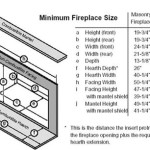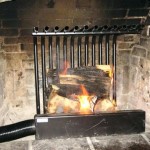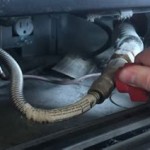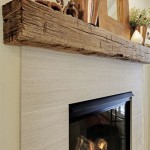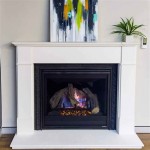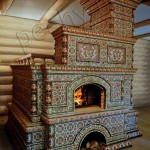Propane Tank for Fireplace Installation: A Comprehensive Guide
Propane fireplaces offer an attractive and efficient alternative to traditional wood-burning fireplaces. They provide consistent heat, require minimal maintenance, and eliminate the need for firewood storage. However, a successful propane fireplace installation hinges on a properly sized and installed propane tank. Understanding the various aspects of propane tank selection, sizing, and safe installation is crucial for ensuring the fireplace operates safely and effectively for years to come. This article provides a comprehensive guide to propane tank installation for fireplaces, covering essential considerations from initial planning to final testing.
Sizing the Propane Tank for Your Fireplace
Determining the appropriate size of the propane tank is the first crucial step in the installation process. An undersized tank will require frequent refills, while an oversized tank represents an unnecessary expense and may take up valuable space. The tank size depends primarily on the BTU (British Thermal Unit) rating of the fireplace and the anticipated usage. The BTU rating indicates the amount of heat the fireplace produces per hour. This information is typically found on the fireplace's nameplate or in the manufacturer's documentation.
To calculate the appropriate tank size, estimate the average number of hours per week the fireplace will be used, especially during peak heating season. Multiply this by the fireplace's BTU rating to determine the total BTU consumption per week. Propane contains approximately 91,500 BTU per gallon. Divide the total weekly BTU consumption by this value to determine the number of gallons of propane needed per week. For instance, a fireplace with a 30,000 BTU/hour rating used for 10 hours per week would consume 300,000 BTU per week, or approximately 3.28 gallons of propane.
However, calculating weekly consumption is just the starting point. Consider the frequency of propane deliveries and the storage capacity needed between deliveries. If deliveries are anticipated monthly, the tank should hold at least four times the weekly consumption. Furthermore, it's important not to completely deplete a propane tank. Typically, it's recommended to refill the tank when it reaches 20-30% capacity. This safeguards against pressure drops and ensures optimal fireplace operation. Therefore, the calculated tank size should be increased to account for this reserve. A safety factor of 1.2 to 1.5 is often applied to the calculated tank size to accommodate variations in usage and ensure an adequate supply.
Residential propane tanks are commonly available in sizes ranging from 120 gallons to 1000 gallons or more. Smaller tanks, such as 120-gallon or 250-gallon tanks, are often suitable for supplemental heating with a fireplace as the primary application. Larger tanks (500 gallons or more) are generally recommended when propane is also used for other appliances like central heating, water heating, or cooking. Choosing the correct tank size is a balance between sufficient capacity, delivery frequency, and available space. Consulting with a qualified propane supplier is highly recommended to determine the optimal tank size based on specific needs and anticipated propane usage.
Installation Regulations and Safety Guidelines
The installation of a propane tank is subject to strict regulations and safety guidelines designed to prevent leaks, explosions, and other hazards. These regulations vary depending on local jurisdictions, but they generally adhere to the National Fire Protection Association (NFPA) standards, specifically NFPA 54 (National Fuel Gas Code) and NFPA 58 (Liquefied Petroleum Gas Code). It's imperative to familiarize oneself with these regulations and obtain the necessary permits before commencing the installation.
One of the primary concerns is the placement of the propane tank. Regulations dictate minimum distances from buildings, property lines, and sources of ignition. These distances vary depending on the tank's size and whether it is installed above ground or underground. Aboveground tanks typically require greater clearances due to their greater potential exposure to hazards. For instance, a 500-gallon aboveground tank might need to be at least 10 feet away from a building and 10 feet from a property line.
Underground tank installations offer aesthetic advantages and can sometimes provide greater protection from the elements. However, they require careful excavation and backfilling to prevent damage to the tank. Underground tanks also need to be protected from corrosion and must be equipped with a cathodic protection system. The tank must be buried at a minimum depth, typically at least 18 inches, to prevent damage from surface activities.
Regardless of whether the tank is installed above ground or underground, proper venting is crucial. The tank regulator, which controls the flow of propane, needs to be vented to the atmosphere. The vent should be positioned to prevent the accumulation of water or debris and should be protected from physical damage. Additionally, all connections and fittings must be properly tightened and leak-tested using a non-corrosive leak detection solution. Never use an open flame to check for leaks.
Grounding is another critical safety measure. The propane tank and associated piping should be properly grounded to minimize the risk of static electricity buildup, which could potentially ignite propane vapors. The grounding system should be installed according to local electrical codes and inspected regularly. Furthermore, it's essential to have a qualified technician conduct a pressure test on the entire system after installation to ensure there are no leaks. A properly installed and maintained propane system is paramount to ensuring the safety of the occupants and the surrounding property.
Connecting the Propane Tank to the Fireplace
Connecting the propane tank to the fireplace requires careful attention to detail and adherence to safety protocols. The connection involves running a propane line from the tank to the fireplace, installing regulators to control the gas pressure, and ensuring all connections are leak-tight. This process generally involves a licensed plumber or a certified propane technician.
The propane line, typically constructed of copper or polyethylene tubing specifically designed for propane use, must be sized appropriately to handle the fireplace's BTU requirements. An undersized line can restrict the gas flow and result in poor fireplace performance. The line should be buried underground or protected from physical damage if run above ground. It is crucial to select materials approved for propane usage, as other types of tubing may degrade and leak over time.
Regulators are essential components of the propane system, reducing the high pressure inside the tank to a lower, more manageable pressure suitable for the fireplace. Most fireplaces require low-pressure propane, typically around 11 inches of water column. A two-stage regulation system is often employed, with a primary regulator at the tank reducing the pressure to an intermediate level and a secondary regulator near the fireplace providing the final pressure adjustment. This system ensures consistent and stable gas pressure, even when the tank is nearly empty.
All connections must be made with pipe dope or Teflon tape specifically formulated for propane use. These sealants help prevent leaks and ensure a gas-tight seal. Every connection, from the tank to the fireplace, needs to be carefully tightened and leak-tested. Using a leak detection solution, brush the solution onto each connection and observe for bubbles. If bubbles appear, the connection is leaking and needs to be tightened or resealed. Do not proceed until all leaks are resolved.
Once the propane line is connected and tested, the fireplace can be started according to the manufacturer's instructions. Observe the flame characteristics and ensure the fireplace is operating smoothly. Any unusual noises, smells, or flame patterns should be investigated immediately. Regular maintenance, including inspecting the propane line, regulators, and connections, is crucial for ensuring the long-term safety and efficiency of the fireplace system. It's recommended to have the system professionally inspected annually to identify and address any potential issues before they escalate into costly repairs or safety hazards.
Finally, it's worth noting the importance of carbon monoxide detectors. Propane fireplaces, like any combustion appliance, produce carbon monoxide. Functioning carbon monoxide detectors should be installed in the vicinity of the fireplace to alert occupants in case of a malfunction or improper venting. Regular battery replacement in these detectors helps ensure continuous protection.

Propane Plus Tank Sizes Above Or Underground Installation

Installing A Gas Range With Portable Propane Tanks Will It Work

General Guidelines For Propane Tank Placement Indoor Comfort Marketing

How Much Is Installing A Tank Of Propane In 2024 Angi

Propane Fireplace Installation Bucks County Gastec

Why Install A Propane Fireplace Paraco Gas

Propane Tank Installation For Home

What Size Propane Tank Is Right For My Home Pitstop And Fuels

Propane Tank Installation Fuel Life Simply Ferrellgas

Propane Plus Tank Sizes Above Or Underground Installation


